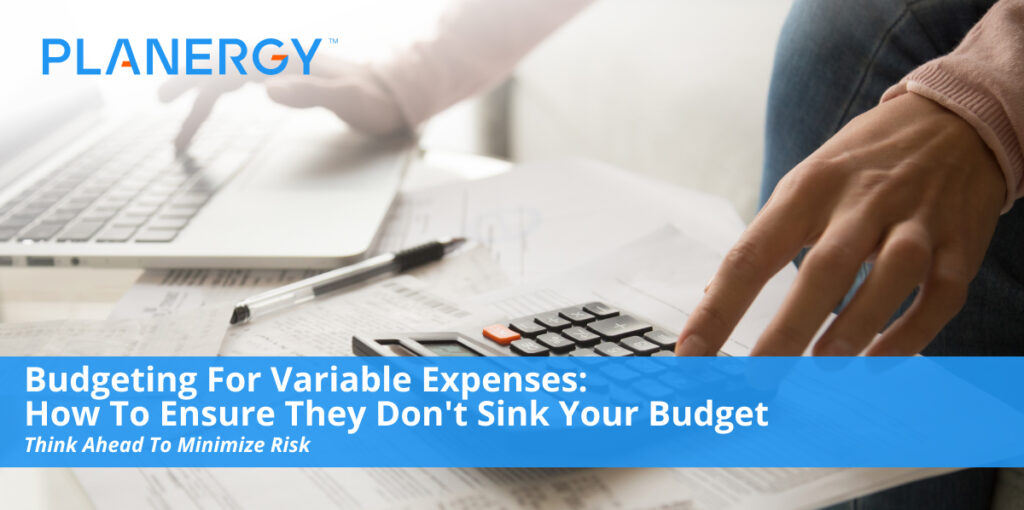Budgeting well is an important part of building a strong and successful business. Covering costs; managing cash flow; investing your earnings back into your company to fund innovation and growth: all of these tasks are much easier when you have a clear view of, and firm control over, all types of expenses incurred.
Managing your fixed expenses is usually pretty straightforward, but what about your variable expenses? If they’re not properly managed, variable costs can wreak havoc on your budget in record time.
But while they can be challenging to track and control, budgeting variable expenses effectively is possible with the right tools and techniques.
Why Budgeting Variable Expenses Effectively Matters
While managing all your businesses expenses is important, not all are created equal.
When it comes to variable costs, the only constant is change. Unlike fixed expenses, which rarely if ever change (and never change for reasons related to production), variable costs can fluctuate daily.
And unlike discretionary expenses, which can certainly change but don’t have a direct impact on operations, variable costs are an essential part of the budget.
Consequently, fixed costs are easy to budget for because they’re largely static. Rent or mortgage payments; life insurance, car insurance, and health insurance premiums; loan payments; subscriptions—these costs are recorded as fixed amounts on every monthly budget,
Discretionary costs can be trimmed or eliminated without sending your company into a tailspin. A celebratory luncheon for a particularly good month will certainly do wonders for morale, but it won’t stop the presses if it’s canceled and the money goes into savings or investments instead.
Budgeting for variable expenses, however, is crucial, because they’re directly tied to production costs. Variable costs for businesses have some overlap with those for individuals; examples of variable expenses include utility bills, credit card payments, car payments, telecommunication and metered Internet costs, etc.
In a business context, these variable costs are further classified as either operating costs (e.g., utilities, professional services, office supplies, etc.) or costs of goods sold (COGS), i.e., those costs that increase in direct proportion to production output, such as labor, overhead, and raw materials.
So if, for example, there’s a heat wave rolling through in the summer and you find yourself running the plant’s HVAC system at a cooler temperature for much longer periods, your electric bill—a variable cost—will probably be much higher than the amount you budgeted.
Your other utility bills might be affected as well. The heat wave might incite higher water consumption to hydrate thirsty workers or cool heat-sensitive equipment, for example, leading to a higher bill from your service provider.
Alternatively, a food producer might find themselves paying more for shipping because the ingredients they use require additional refrigeration or special shipping to avoid spoilage in the extreme heat. A seasonal small business like a shaved ice shop might have unexpected staff costs as it needs to hire more delivery people or sales staff to meet increased demand.
Whatever the reason, if you’re caught unawares, even modest unexpected expenses can skew your budget, forcing you to reallocate funds you’d already earmarked for other projects to cover the difference.
Given their potential impact on your bottom line, cash flow management, and strategic agility, having a plan in place to manage your variable expenses is simply good business.
If you’re caught unawares, even modest unexpected expenses can skew your budget, forcing you to reallocate funds you’d already earmarked for other projects to cover the difference.
Protecting Your Budget from Unmanaged Variable Expenses
The first step to managing any aspect of your business is to make sure you have full visibility into, and control over, the data you need to make good decisions.
Whatever the reason your expenses change in a given period of time, adjusting your spending habits to gain visibility into your spend and making sure you have enough money set aside to deal with variable expenses can provide an essential cushion against shortages and other disasters.
It’s not as difficult as you might think. Take charge of your variable expenses with some strategic investment in digital tools and some modest adjustments to your business processes.
1. Invest in Procure-to-Pay (P2P) Software
The age of big data is upon us, and in order to transform the seemingly endless flow of information into actionable insights, more strategic decisions, and better budgets, you need the right digital toolkit.
Automation, artificial intelligence (AI) and data management/analytics are powerful aids in achieving spend visibility and management.
For example, a comprehensive P2P solution like PLANERGY:
- Centralizes data management, providing a single, secure platform for data storage, access, and analysis.
- Simplifies spend management by providing customizable dashboards that allow for real-time analysis, forecasting, budgeting, and decision-making.
- Lets your team leverage historical data to:
- Identify seasonal trends.
- Monitor evolving spending habits.
- Create financial forecasts and models to evaluate potential spending, investment, and budgeting decisions.
- Manage discretionary spending more effectively.
- Includes guided buying and vendor management tools to eliminate rogue spend and invoice fraud to ensure complete and accurate spend data for analysis.
- Uses process automation to reduce costs, improve efficiency and data accuracy, and provide clean and complete data more quickly for more useful and timely budgeting.
- Supports the development and implementation of spend and budgeting controls that help your entire organization manage all types of expenses more effectively.
2. Invest in Technology to Help Manage Variable Costs
A reliable procurement software package can help you literally track and manage your expenses, but other technologies can help you reduce their volatility.
- Invest in energy-efficient hardware wherever possible to reduce energy use. Automatic, motion-controlled lighting and high-efficiency HVAC and plumbing systems are just two ways you can keep variable costs as low as possible to reduce their impact over time.
- Outsource your IT. Reducing your local tech footprint by moving to remote tech support and hosting not only cuts your utility bills, but helps reduce your environmental impact and might even help you earn further savings via green tech incentives. And moving from onsite software to Software as a Service (SaaS) applications makes it easier to further reduce overhead costs by supporting remote, mobile-friendly access for your team.
- Make smart use of social media. The magic of social media lies in its ability to help you build brand loyalty and transform satisfied customers into brand ambassadors who augment your marketing capabilities without generating payroll or additional marketing costs. Your team will need to invest time and skill, but social media is free, has a massive potential reach, and can generate long-term value beyond trimming your marketing budget and printing costs.
3. Negotiate a Fixed Rate for Utilities
Check with your service providers about fixed-rate billing for your utilities. You’ll pay the same rate each month in exchange for slightly higher long-term costs, but the strategic value that comes from reducing volatility in your monthly budget will likely more than make up the difference.
4. Create a Cushion for Variable Costs
Your historical spending habits are a rich source of strategic value. Review your variable expenses for the past five years to see just how “variable” they really are; if your total variable costs per annum typically hover around the same amount, then you can reliably estimate how much they’re likely to be in the year ahead, barring disaster.
That potential disaster is the reason you’ll want to choose your highest variable costs from the period of time you’re reviewing and use it as your baseline for your new budget—it’s better to err on the side of caution when it comes to minimizing risk!
Once you have your baseline, add an additional 3 to 5 percent as a “cushion.” You’ll have extra funds in case your monthly expenses change unexpectedly, and can always move any “leftovers” to your discretionary fund.
If you’re within your cushion as you monitor your actual spend and compare it to your budget, you can further refine your estimates for next year’s budget and accompanying cushion to save money while still hedging against changing costs.
5. Create a “Rainy Day” Fund
Depending on your cash flow needs, setting up a special bank account to hold any extra money left from your budget can provide a much-appreciated extra layer of insulation against unexpected volatility.
Plus, a savings account will generate interest on any funds deposited.
6. Secure a Business Line of Credit
You’ve got your cushion. You’ve opened your rainy day fund. But given that 82% of small businesses fail due to cash flow problems, a little extra insurance can only help.
A business line of credit from your bank or financial institution provides reliable, on-demand access to emergency funds. You only pay interest on what you take out, you can withdraw cash, and a line of credit will generally have a significantly higher credit limit than credit cards, making it easier to tackle even major unexpected expenses.
Take Control of Your Variable Expenses and Budget with Confidence
Variable expenses are sometimes tough to anticipate, but they don’t have to be hard to manage.
Don’t be afraid to leverage the practices, strategies, and software tools that can help you track and optimize your spend.
Putting a plan in place for budgeting variable expenses will ensure you’ve got the breathing room you need to protect your budget (and bank account!) so you can put your resources to use building a more strategic and successful business.




